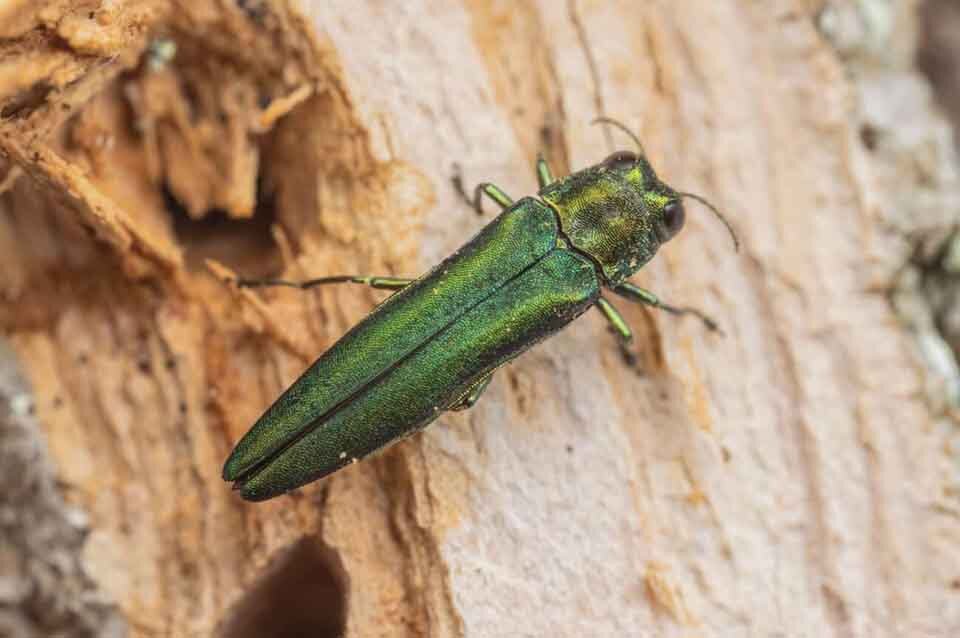A Year After the Arrival of the Invasive Emerald Ash Borer in Oregon, Here is What Tree Owners Need to Know

There are very few things as dangerous to wildlife as the touch of humanity on their homes. Something that just might rival that, however, are the foreign invaders of the natural kind.
Invasive species are extremely harmful to our local wildlife. Because of the new environment they find themselves in, their population cannot be controlled through natural means such as with predators, allowing them to run rampant. One of the most recent ones we’ve had to worry about is the emerald ash borer, a beetle originally from Asia that is absolutely devastating to Oregon trees. It’s not even the size of a penny, but they can destroy a tree with relative ease. What they do is they lay eggs beneath the bark of the ash tree, and when the larvae hatch, they feed on the tree and cut the sugars off from the roots. Slowly over the course of four to five years, the tree will starve and die. Because the beetle has no natural predators, it’s allowed to spread, and there’s only so much humans can do to prevent it. Smaller creatures that have so many offspring are nearly impossible to eradicate without harming other organisms in the process.
It arrived within the United States in 2002, supposedly having been brought over by a wooden pallet ship, and slowly since then, they’ve gone on to infest 36 different states, making their way towards Oregon.
Well it’s been a year since they’ve been identified within Oregon, so where are we now?
The borer has only been found within Washington county thus far, where a quarantine has been put in place keeping ash and fringe tree wood from being moved out of the area, as those are the trees they inhabit.
If you are a homeowner with an ash tree, don’t go about taking down your ash tree just yet, as that will not help the cause. It could be years before they find your tree, and even then, it will take years before the tree actually dies, so unless the tree is already infested or the insect has been identified inside, the tree should remain up. If there is indeed a borer inside, it needs to be removed before the tree becomes a hazard to the environment.
Homeowners can use pesticides to keep insects at bay for a time, but know that if a borer finds its way inside your tree, pesticides will not kill them. Even if you decide to go the pesticide route, you should still be mindful of the fact that pollinators visit your plant life as well, and unlike the borer, they can be killed by the pesticides.
If you think your ash tree might be infested with the emerald ash borer, here are the signs you should look out for to confirm it:
- A dying crown
- Sucker shoots growing from the trunk/base of the tree
- D-shaped holes in the bark
- Splitting back and S-shaped areas underneath the bark
The holes you see are more than likely sap-sucking animals trying to get to the larvae inside. All in all, though, if your tree looks like it’s dying and you just don’t understand why, you may want to look out for the insect in question.
No one wants a barren yard, though, so what can you do? Well, you might have to consider a different tree. There are many safe trees you can plant to replace the native ash tree that can’t be infested. If you’re curious about what trees you can get, as nursery professionals in your area. They’ll be able to tell you what tree is best for your home, as they all have different needs.
One of the most important parts about containing the spread of an invasive species is being able to track it. If you see a borer, you should contact the Oregon Invasive Species Hotline.
Many consider the borer’s complete invasion of Oregon to not be an “if”, but a “when”, and based on what’s happening in the Eastern United States, around 99% of Oregon’s ash trees will disappear. Unfortunately, it seems like the main way to get rid of this invasive species is through the eradication of one of our native trees. It’s highly devastating, and yet the most likely outcome.

Comments are closed.